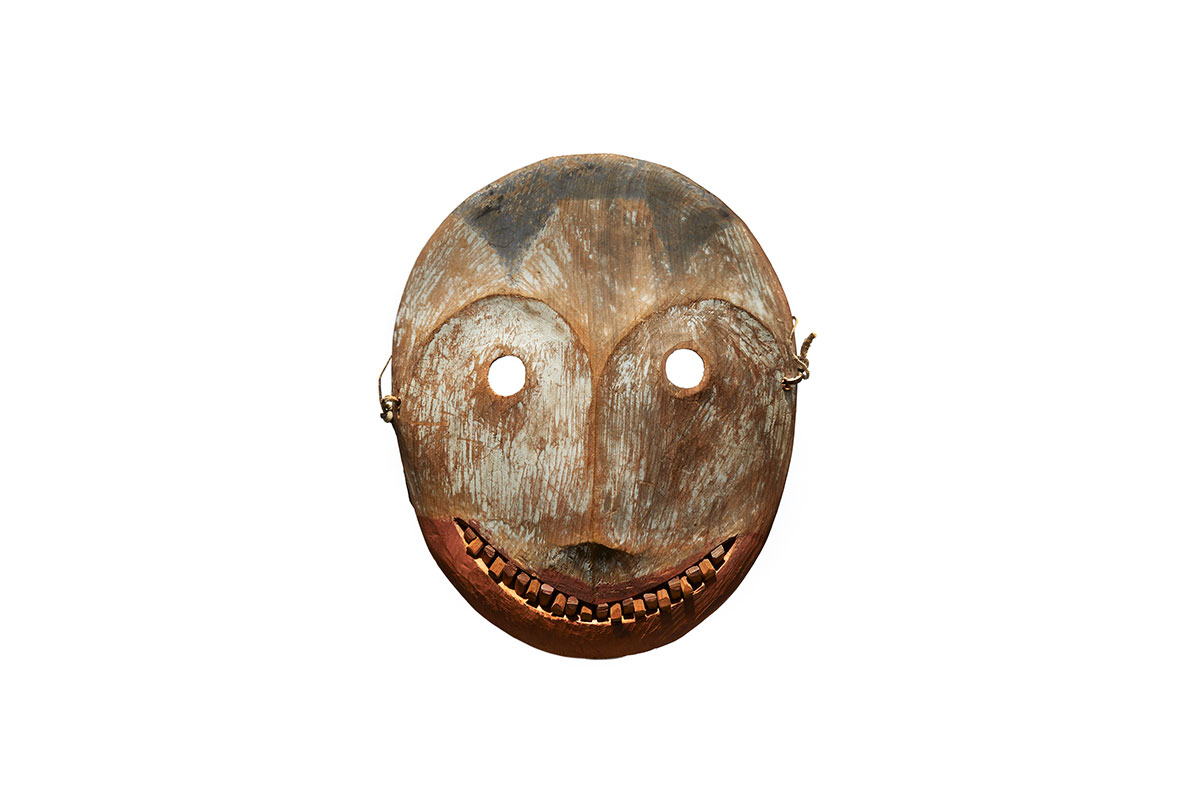Dance Mask
likely Lower Yukon River, Alaska
ca. 1880
wood, paint
height: 8 ½"
Inventory # E4400
Sold
PROVENANCE
Purchased by Jeffrey Holbrook in 1962 or 1963 in Seattle, Washington
RELATED EXAMPLES
Smithsonian Institution, Washington, DC, Cat. No. 153620 – See: Fienup-Riordan, Ann. The Living Tradition of Yup'ik Masks. Seattle: University of Washington Press, 1996, pg. 228.
Smithsonian Institution, Washington, DC, Cat. No. 153619- See: Ibid, pg. 176, for another mask displaying a wide toothy mouth. Feinup-Riordan notes:
Lantis (1990) contended that these toothy mouths symbolize animals’ revenge on their human hunters. Jasper Louis (1994) said simply “if the being they were creating had many teeth, they would make the mask look like it, too”.
Yup’ik dance masks convey great bodies of knowledge through their use in danced performances. Each is unique, created as a tangible manifestation of a shaman’s vision to bring the unseen or unknowable into a solid form. Yup’ik cosmology revolves around the close relationship between human society and the spirit world. The present mask would have likely been performed during the winter ceremonial season, when the souls of animal spirits were thanked for willingly offering their bodies to hunters. According to Yup’ik elder Jasper Louis (born 1916), a broad toothy grin reflects the distinct appearance of the spirit represented. Sound, motion and the interaction with other dancers would animate the mask, but its full meaning is tied to ceremonial life, mythology, social organisation and storytelling.
The mask pictured above bears a certain stylistic resemblance to wooden portrait masks carved by the neighbouring Inupiaq. The treatment of surface and reduced overall design suggest that it was created by a Central Yup’ik artist from the Norton Sound area, inhabited by both social groups. The village of St. Michael, founded in 1833 by the Russian-American Company, was an important trading post among the Indigenous peoples of Alaska, and it is likely the inspiration for the striking visual expression of the present mask was found there.

